Please do your research before adding a bunny to your family.
BUNNY CARE TIPS
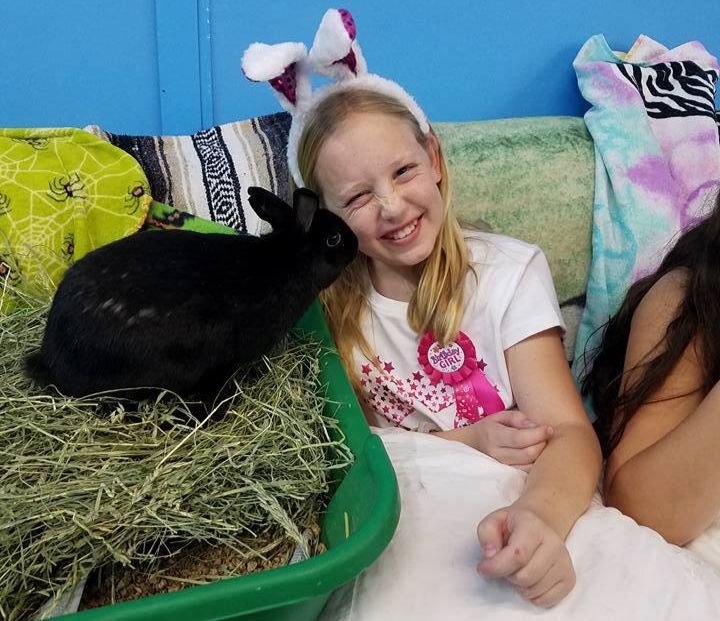
Holding Your Bunny
Rabbits are very delicate creatures. You must support your rabbit's back legs and hold it against your chest. Never pick-up your rabbit by the ears or the scruff of the neck. Young children should not be allowed to pick up a rabbit as the rabbit has powerful back legs and can scratch very deeply, also a rabbit can break it’s own back by struggling if it is held incorrectly. Have children sit on the couch or floor and let the bunny come to them. Always supervise!
Your Bunny's Housing
Rabbits should always live inside your house with you, as part of the family. Rabbits should never be kept in an outdoor hutch, and most cages are too small for a rabbit to live in. Rabbits need just as much exercise as a cat or dog and must have room to run around. Some rabbits live free in the house. The house must be rabbit proofed meaning all cords covered or out of reach, no poisonous plants, no animals or children that can harm them and no way to get out. Some live in a rabbit proofed room, and some live in an exercise pen and let out for exercise in a rabbit proofed room or house. Small rabbits need just as much room to run around as large rabbits do. Puppy type exercise pens make a great "home base" for your bunny instead of a cage. The pens give your bunny plenty of room to stretch out and leaves enough room for all the items mentioned below. Your bunny still will need lots of exercise time out of the pen.
Your bunny's home should include the following: Food Bowl, Water Bowl, Hay, Litter Box, Toys, something for them to hide/rest in like a bunny tent or cardboard box.
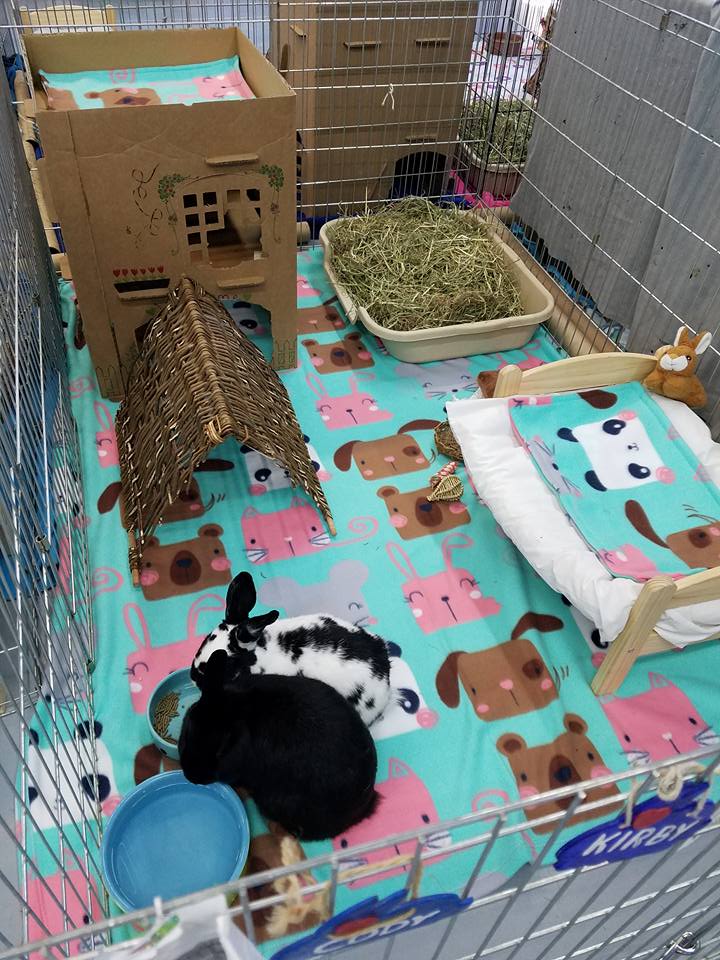

Litter Box Training
Rabbits are easily litter boxed trained. Just provide a large litter box with rabbit safe litter, such as Carefresh or Yesterday's news and pile hay on top. You can also use a hay rack placed above the litter box instead of placing the hay in the litter box. It is important to use a bunny safe litter. Clay or clumping litters for cats can be dangerous to bunnies. Pine, cedar or other aromatic wood shavings may also be harmful to your bunny's health. Use a simple paper based, recyclable litter provides your bunny with a safe litter. Rabbits like to graze and poop at the same time so keeping hay in the litter box gets them to use it and to eat more hay. Rabbits may also choose a corner they prefer to use. When starting training you can place a few litter boxes in the area and see which they prefer. If a few poops end-up outside the litter box place them in the box to help your bunny. Change bunny's box every day, to ensure a clean, fresh box. This will prevent bunny from heading to cleaner places to eliminate. Younger bunnies may take longer to litter train than older bunnies.
Toys
Rabbit's teeth continually grow. It is very important you provide safe toys for your rabbit to chew. Make sure whatever you provide for your rabbit to chew on is rabbit safe. Chew blocks, untreated willow baskets, willow balls, willow wreaths and untreated apple twigs all make great chews. Rabbits are also very curious and playful. They need toys to stimulate them mentally. Some favorite rabbit toys are balls with a bell inside, baby keys, rattles and the chew toys mentioned above. Rabbits like to have a hiding place to lie in or under such as a willow tent, bunny condo or hideaway or even a cardboard box with multiple holes cut into it.
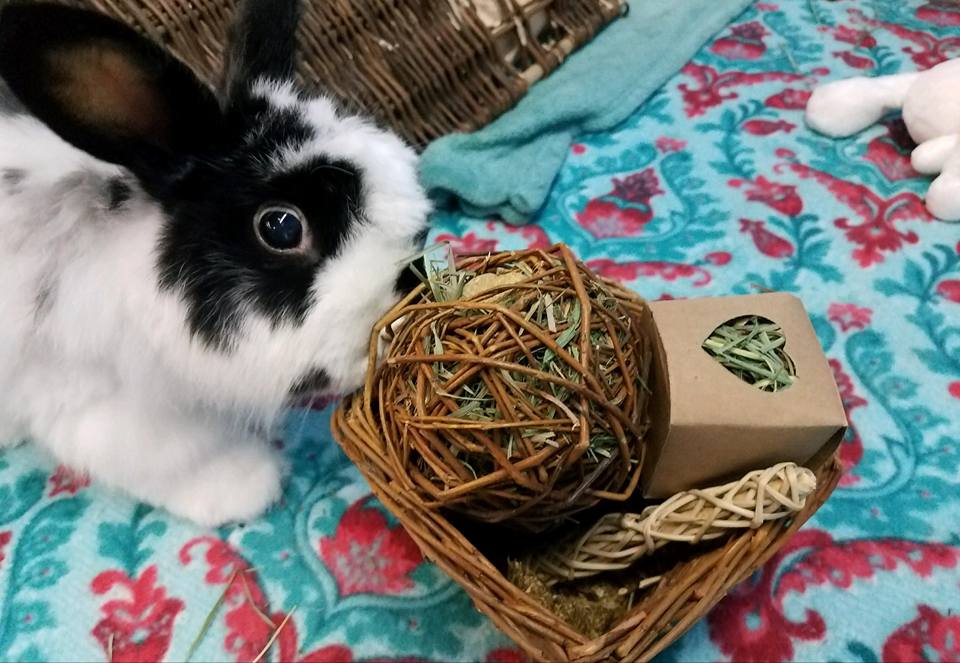
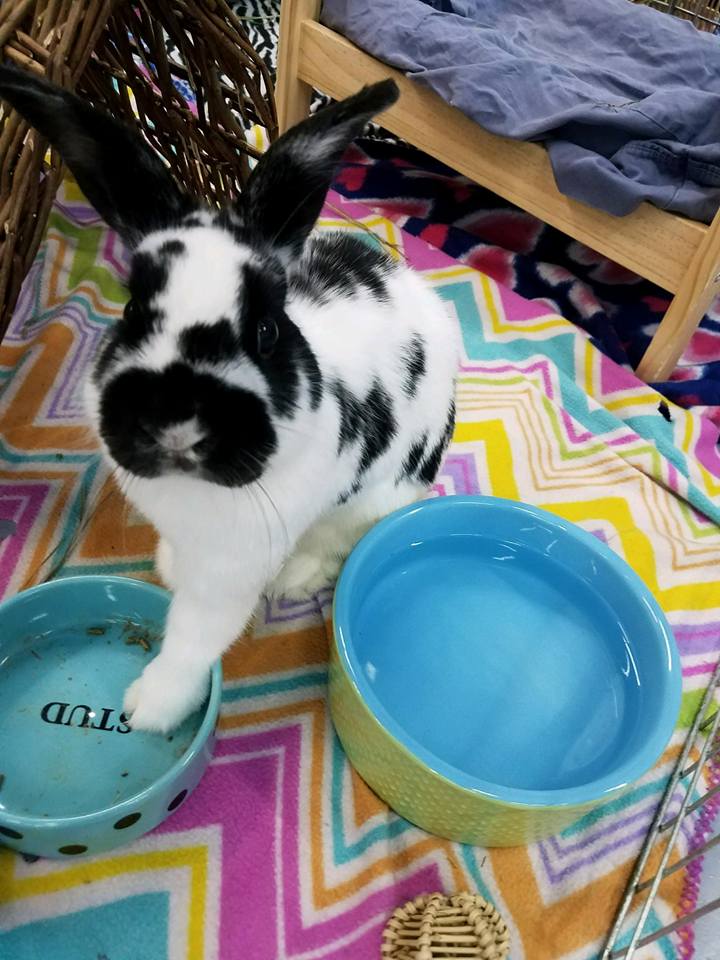
Proper Diet
A proper diet is of utmost important to the life and well-being of your bunny. A proper diet should include unlimited fresh hay, a limited amount of pellets and fresh greens. Hay must be available at all times. Pellets and fresh greens can be split, one in the morning, one in the evening. Rabbits can have treats, but only in a very limited number and they must be healthy. Most store bought rabbit treats are not good for rabbits.
Fresh water should be available at all times, in a clean, large, heavy crock. Rinse the water crock out every day and give it a good cleaning about three times a week to prevent algae build up.
Pellets
Adult rabbits should be fed a good quality, high fiber (20% or more) Timothy pellet. Feed only 1/4 of a cup a day for a 5lb rabbit. Rabbits that are free fed pellets tend to become overweight, will not eat as much hay and can become very ill. Never feed pellets that have nuts, seeds or cereal looking items added in, these are high in sugar and carbohydrates.
Hay
Hay is one of the most important parts of your bunny's diet. Fresh hay should be provided at all times. Hay is rich in nutrients such as vitamins, minerals, proteins and provides “food” for the micro-organisms that make up the cecotropes. Hay provides indigestible fiber that promotes healthy motility (movement of contents) of the intestinal tract. Hay also provides healthy chewing activity to promote proper wear of the teeth (the teeth of a rabbit grow continuously throughout their life) and chewing also provides healthy mental activity which decreases destruction of inappropriate objects and provides a “full feeling” in the stomach which is satisfying. Grass hays are best and from timothy, meadow, oat, rye, barley or Bermuda grasses. The healthiest choice is Timothy Hay. Alfalfa Hay should not be fed to adult rabbits. Hay should be stored in a cool, dry, dark location. It is very important to make sure your hay does not get damp or wet, as this could cause mold to grow, which is life threatening to rabbits and other small animals. Hay should not be stored in an airtight container, as it needs air to circulate. You may want to store it in a large cardboard box. If your hay is in a plastic bag, do not seal the bag; leave the top open. Your bunny should always have fresh hay, day and night.
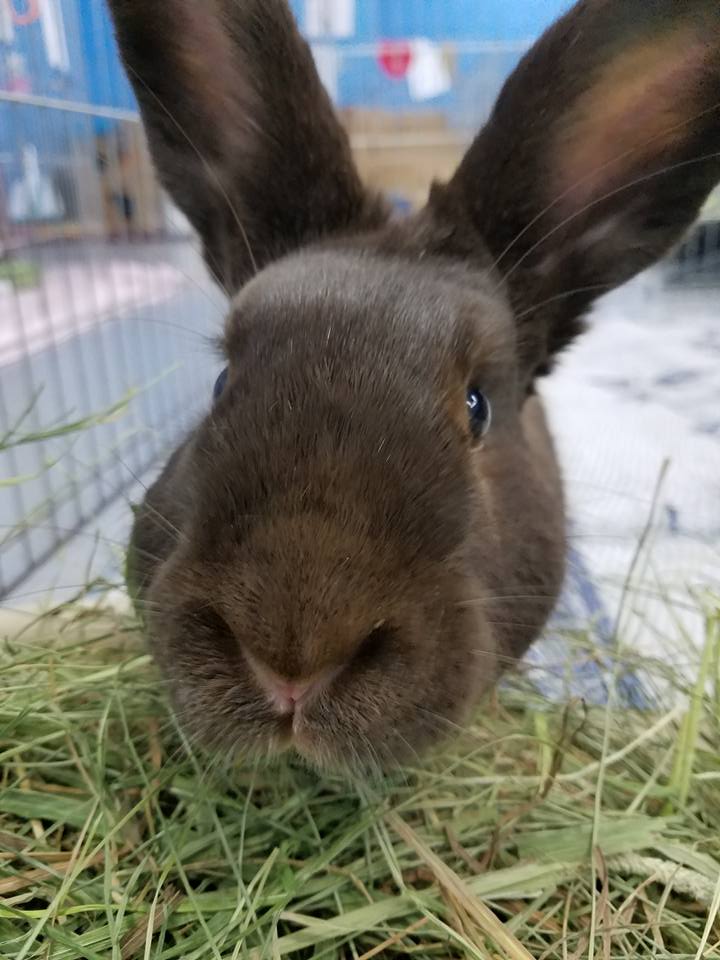
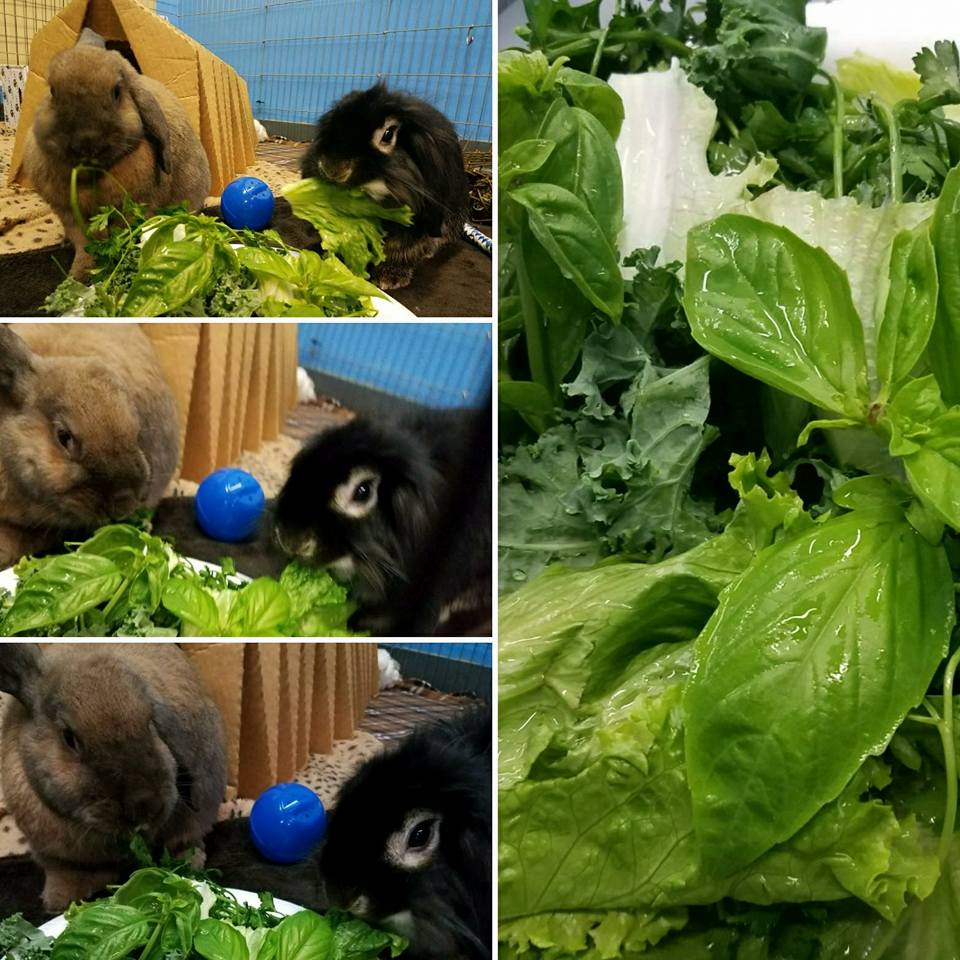
Fresh Greens
Fresh greens are equally as important as hay in the rabbit’s diet. Remember we said that rabbits are designed to eat grasses and leaves, so green foods represent the “leaf” part of the diet. Fresh greens provide all the same benefits that we listed for hay. They also contain a wider variety of micronutrients and importantly provide water in the diet. Feeding fresh greens also forces the rabbit to take in liquid and thus helps promote healthy GI function as well as kidney and bladder function. Greens are appropriate for any age of rabbit. If a weaned rabbit is eating hay, he can eat greens right away. Start out slowly when adding a new green to your rabbit's diet. When selecting and using green foods follow these guidelines:
- Buy (or grow) organic if possible
- Wash any green foods first
- Feed a variety of green foods daily – a minimum would be three varieties – variety provides a wider range of micronutrients as well as mental stimulation for your pet
- Feed a minimum of 1 packed cup of green foods per 2 pounds of body weight at least once a day
Vegetables
Radish & clover sprouts
Basil
Beet greens (tops)
Bok choy
Broccoli (mostly leaves/stems)*
Brussel sprouts
Carrot & carrot tops*
Cilantro
Clover
Collard greens*
Dandelion greens and flowers (no pesticides)*
Endive*
Escarole
Green peppers
Kale*
Mint
Mustard greens*
Parsley(Italian flat leaf is preferred)*
Pea pods (the flat edible kind)*
Peppermint leaves
Radichio
Radish tops
Raspberry leaves
Red or Green Leaf lettuce Romaine lettuce (no iceberg or light colored leaf)*
Spinach*
Watercress*
Wheat grass
A variety is necessary in order to obtain the necessary nutrients, with one each day that contains Vitamin A, indicated by an *.
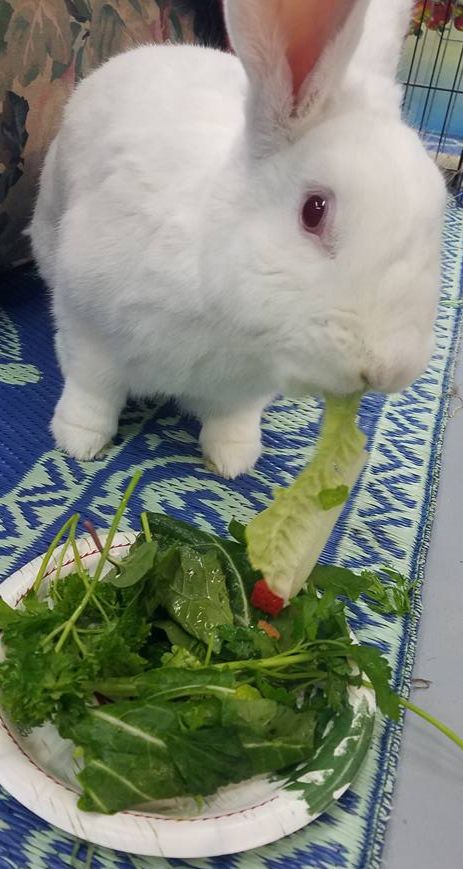
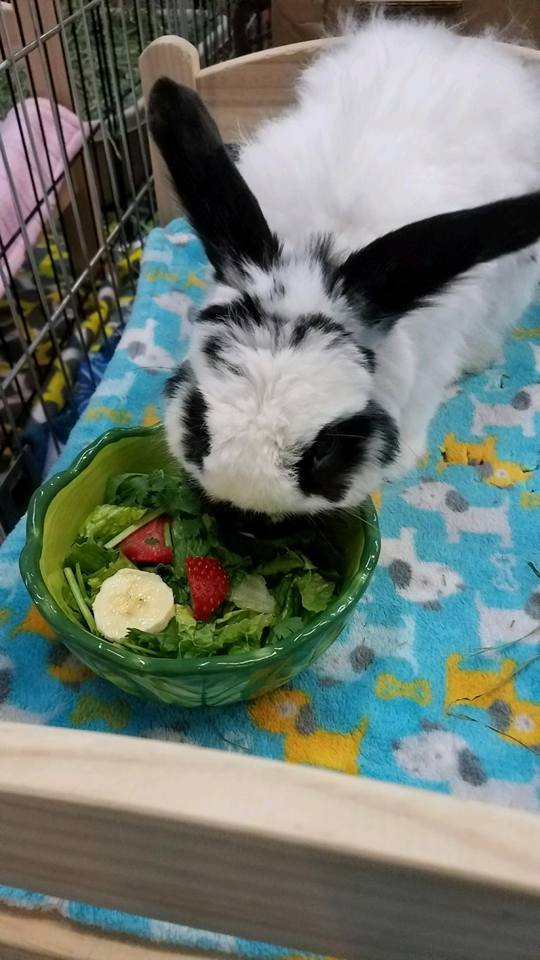
Fruits
Fruits can be fed as a treat in very limited quantities. Limit fruits to 1-2 tablespoons per 5 lbs. of body weight (none if dieting) from the list below of high fiber fruits. Sugary fruits such as bananas and grapes should be used only sparingly, as occasional treats. Bunnies have a sweet tooth and if left to their own devices will devour sugary foods to the exclusion of healthful ones. Below please find a list of acceptable fruits.
Fruits:
Apple
Blueberries
Melon
Orange (remove the peel)
Papaya
Peach
Pear
Pineapple
Plums
Raspberries
Strawberries
Absolutely NO chocolate (poisonous!), cookies, crackers, breakfast cereals, bread, pasta, yogurt drops, or other "human treats." There is research to suggest these items may contribute to fatal cases of enterotoxemia, a toxic overgrowth of "bad" bacteria in the intestinal tract.
Spay & Neuter
The neutering/spaying of rabbits is of utmost importance. Altered rabbits are healthier and live longer than unaltered rabbits. The risk of reproductive cancers (ovarian, uterine, mammarian) for an unspayed female rabbit is virtually eliminated by spaying your female rabbit. Your neutered male rabbit will live longer as well, given that he won't be tempted to fight with other animals (rabbits, cats, etc.) due to his sexual aggression. Uterine adenocarcinoma is a malignant cancer that can affect female rabbits over two years of age. The best prevention for this disease is to remove the reproductive organs (ovaries and uterus) in a surgical procedure commonly called a spay. The procedure can be performed in females over four months of age. Spaying a rabbit also prevents pregnancy and can help control some aggressive behavior. Male rabbits can also develop disease of the reproductive organs (the testicles) but with much less frequency than females. However, some male rabbits have a tendency to become aggressive in their “adolescent” years (8-18 months of age) and can also start spraying urine outside the toilet area to mark their territory. Surgical removal of the testicles, called castration, can control these behaviors if it is done before the behavior occurs or shortly thereafter.
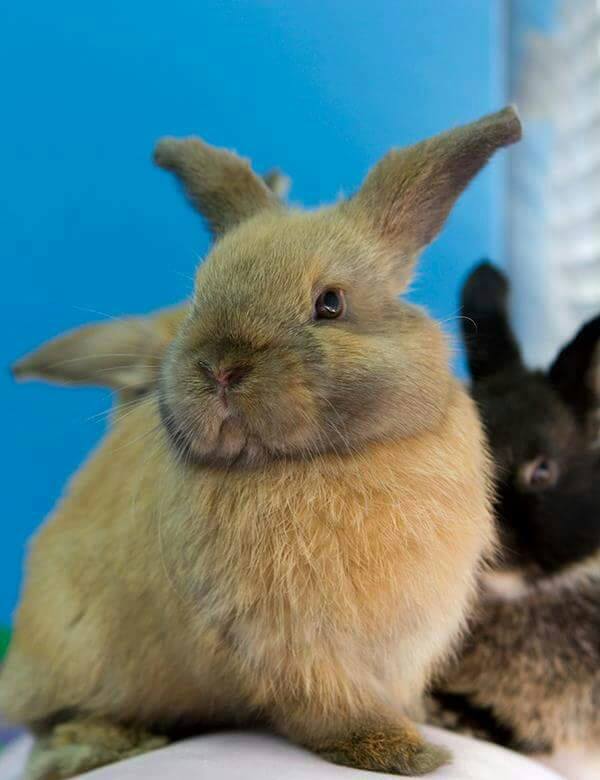
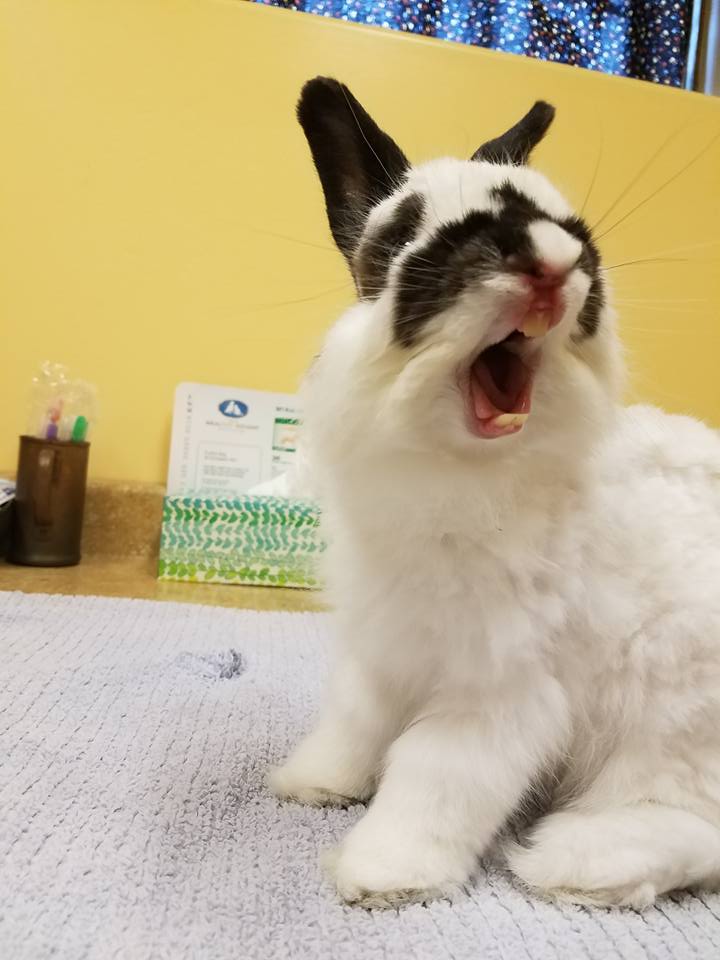
Body
Run your hands over your rabbit's whole body, including head and jaw area to check for any unusual lumps or bumps. Rabbits can often get abscesses which need to be treated right away. The sooner you notice a problem and get it treated the better the chance you have for a good recovery.
Teeth
Rabbit's teeth continually grow. The front teeth must be lined up correctly in order for them to be kept trim. The cheek teeth must also be lined up; sometimes rabbits can grow molar spurs or have other teeth problems such as impaction and abscesses. If you ever notice your rabbit drooling, having trouble eating, or having a runny eye this could be a sign of a tooth problem and the rabbit must be seen by a rabbit vet. Some rabbits have malocclusion where the teeth don't line up. In most cases the teeth will have to be trimmed or filed, in some cases they have to be removed. It is VERY important that you find an expert in this field who has a lot of experience with rabbit teeth.
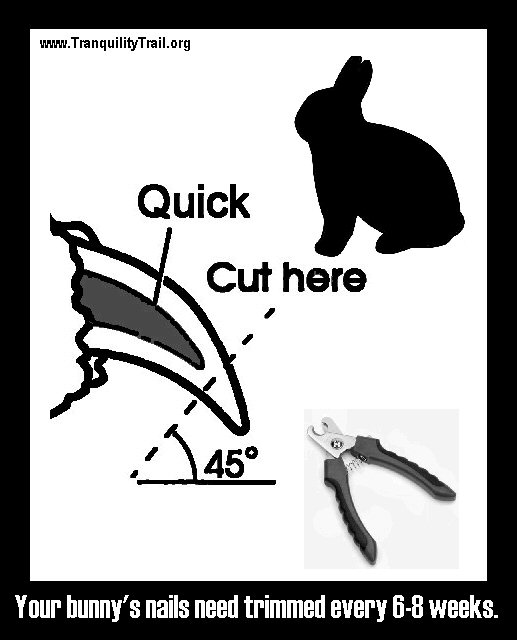
Nails
Rabbit's nails grow continuously so they will need to be trimmed about every six to eight weeks. It is important to know how to trim a rabbit's nails correctly. If you cut them down to short you may cut into the quick which will be very painful and will bleed. This can also lead to infection. A rabbit vet can show you how to trim nails. We also do free nail trimming.
Feet
Check the bottom of your rabbit's feet for sore hocks. These are patches of skin where the fur has worn away, often from being on a wire bottom cage or a hard surface. They can be come very sore, swollen and infected, and must be treated right away.
Shedding
Rabbits shed every 3 months. Every alternate time they'll have a light shedding that may not be very noticeable. Next they'll have a heavy shedding that you will not be able to escape. Rabbits are fastidious groomers. They insist on being clean & tidy and will lick themselves like cats, and like cats, they can get hairballs if they ingest too much hair. Unlike cats however, rabbits cannot vomit. If hairballs are allowed to form they can become gigantic masses of tangled hair & food and will block the stomach exit, causing the rabbit to starve to death while his stomach appears to be very fat. Rabbits need to be brushed at least weekly. In addition to removing any loose hair, this weekly brushing session helps prepare them for the multiple daily brushings that they must undergo when their heavy shedding begins. Rabbits will shed in different ways. Some rabbits will take a couple of weeks or more to loose their old coat of fur. Other rabbits will be ready to get rid of their old coats all in one day and these rabbits are the ones that cannot be neglected once they start shedding. You can often remove a very large percentage of hair by just pulling it out with your hand. But, however you remove it, remove it as soon as possible or your rabbit will do it during grooming.
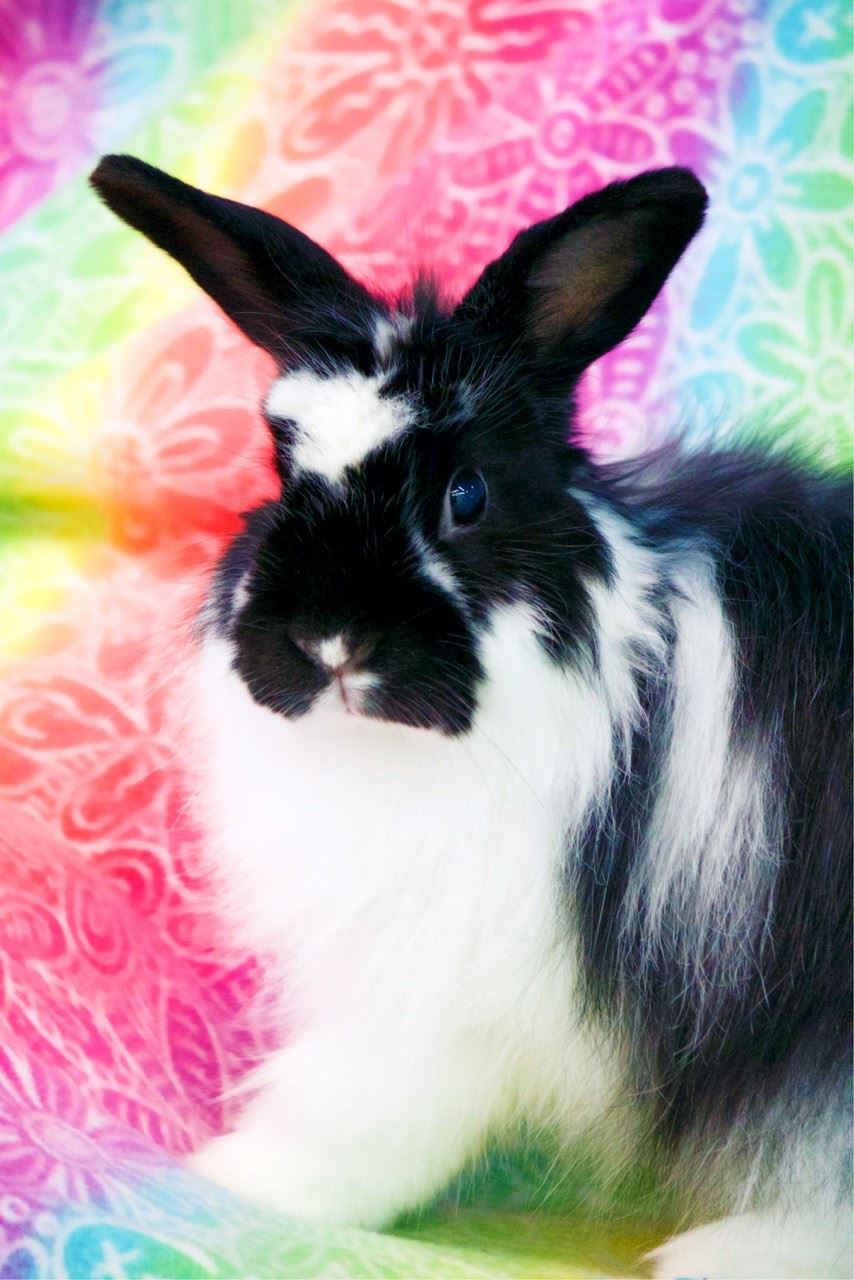
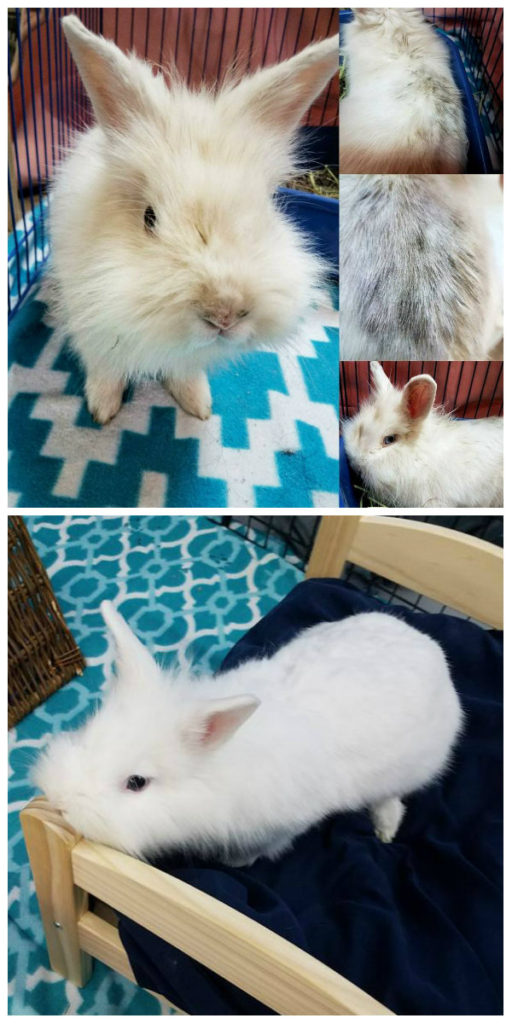
Baths
NEVER, unless your veterinarian advises it to bring down a fever-should you give a sick rabbit a bath. Because seemingly healthy rabbits can have undiagnosed problems, it's best not to subject them to the stress of a bath. If your rabbit is very badly infested with fleas, there's a good chance that he is already compromised and may go into shock when bathed. Also, a thoroughly wet rabbit takes a very long time to dry, so spot cleaning the dirty area is better than an over-all bath. Normal rabbit body temperature is 102. Since they are subject to heat stress, use a warm dryer, not hot, to dry areas that have been spot cleaned.
Fur & Skin
Check the fur and skin for white flakes or tiny black dots. If you notice either of these your rabbit probably has mites (white flakes) or fleas (black dots).
Ears
It is important to check inside your rabbits ears for wax, debris build up or infection. Smell inside the ear to make sure there is not a yeasty or bad smell. Look inside the ear to make sure it is nice and clean.
Scent Glands
Male and female rabbits have two scent glands on either side of the genitals. These are two small pockets which need to be cleaned about every three months or so. When cleaning the scent glands it is important to be gentle. We suggest using a q-tip dipped in warm water and gently wipe out the debris.
Please do your research before adding a bunny to your family.
Discover the wondeful world of bunnies...
Volunteers help to care for the bunnies at the sanctuary. Discover the wonderful world of bunnies, including proper care, diet, socialization, bunny language, etc.
